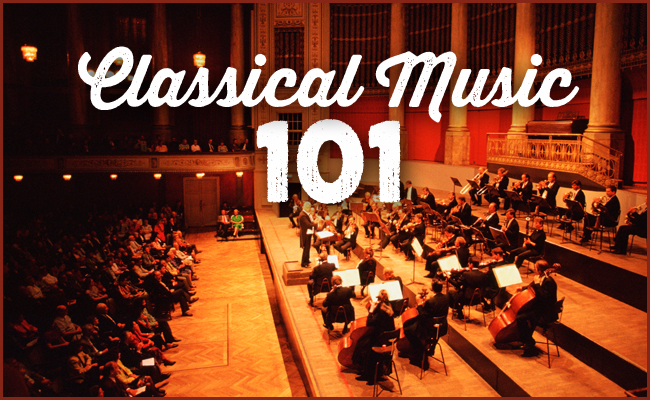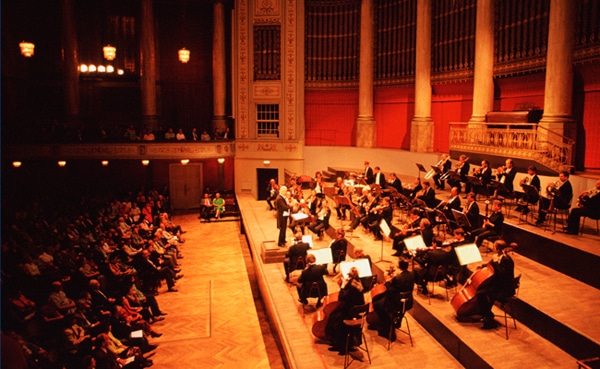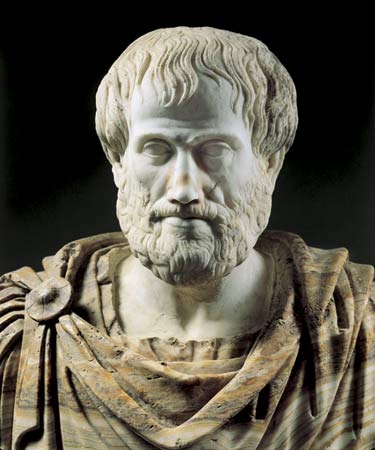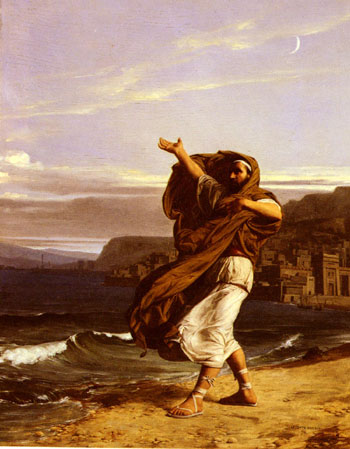
Welcome back to our series, Classical Music 101! Our goal with this series is to provide an approachable, non-intimidating introduction to classical music so you can start appreciating this timeless musical genre.
In our last article, we explored the rich and intricate music of the Baroque era, a period marked by elaborate ornamentation, expressive melodies, and the rise of instrumental compositions. We took a look at the works of composers like Vivaldi, Handel, and JC Bach, who defined the Baroque sound with their dynamic and complex compositions.
In today’s article, we’ll explore the Classical era, a time when music got more natural, refined, and elegant, and you’ll meet composers like Haydn, Mozart, and Beethoven. These musical giants set the standard for Western instrumental music, so much so that we now refer to all Western concert music, regardless of the era in which it was composed, as “classical” music.
The Classical Era (1750-1820)
The Classical era began roughly around 1750 and ended around 1820 with the rise of the Romantic era.
The transition from the Baroque to the Classical era marked a fundamental shift in aesthetics. Music moved away from the intricate polyphony and intellectual rigor of composers like Bach and towards the accessible melodies and emotionally expressive style championed by the likes of Haydn and Mozart.
While Baroque music sought to capture the grandeur and complexity of the natural world in an objective, almost mathematical manner, Classical music aimed for a more subjective ethos. The goal was to create music that expressed the inner thoughts and emotions of an individual through vocal lyricism and easy-on-the-ear melodies.
Bach’s sons played a pivotal role in the transition from the Baroque to the Classical era (Fun fact: Bach had 20 – 20! – kids; the guy not only birthed a ton of Baroque bangers but also sired a prodigious passel of progeny.) During the 1750s, sons Johann Christian, Carl Philipp Emanuel, and Wilhelm Friedemann took Baroque ideas and began modifying them slightly into a style that would lay the groundwork for Classical greats like Haydn and Mozart.
Just as larger socio-political trends shaped Baroque music, Classical music was also influenced by cultural changes in the West at the time, specifically the Enlightenment.
Enlightenment era thinkers emphasized reason, individualism, and humanism, and they looked to ancient Greece and Rome for inspiration on cultivating these ideals. This emphasis on classical Greek and Roman culture during the Enlightenment was called Neoclassicism.
During the Enlightenment, political philosophers used the works of Plato, Aristotle, and Cicero to support their arguments for individual rights and republican forms of government. Architects emulated the architecture of ancient Greece and Rome with its emphasis on simplicity and order. Artists would create paintings depicting classical myths. All these Enlightenment thinkers held the optimistic belief that one could achieve excellence politically, morally, and artistically through reason and discipline.
Thanks to advances in industrial production and the rise of governments that emphasized individual rights, a burgeoning middle class began to develop and started flexing its economic power by seeking entertainment that resonated with their democratic and individualistic ideals.
Instead of the complex and ornate Baroque art that appealed to royalty, Enlightenment middle classers wanted art that was accessible, inspired personal edification, and was emotionally direct.
Musical composers that were alive during the Enlightenment responded to these changing tastes and ideals by creating a musical style that became known as Classical.
Characteristics of Classical Era Music
Clarity. When you listened to a Baroque tune, it was often hard to distinguish different parts of the song. There was a lot going on. The components of classical music are much clearer. Instead of creating songs with mathematically intricate parts that worked together to create a unified whole, Classical composers produced music that had much more clearly defined elements, making it easier to listen to.
Emphasis on melody. Part of what made Classical era music easier to listen to was its emphasis on melody. In contrast to the intricate, interwoven melodies of Baroque music, Classical music predominantly uses a homophonic texture. This means that a single, readily appreciable melody takes center stage, supported by harmonic accompaniment in the form of chords. The result is music that has a lyrical feel to it.
Emotional expressiveness. The piano rose to prominence during the Classical era, opening new opportunities for emotional expressiveness. Unlike the harpsichord, which was popular during the Baroque era and can only be played at a single volume (really loud), the piano can be played softer or louder. This was the birth of crescendo and decrescendo. This ability allowed composers to create dynamic, emotionally expressive music that can truly move you. If you want to get wistful, you play the piece soft. If you want to get bold, you play the music loud. And you could do both in the same piece of music.
Accessible. Music during the Classical era became accessible in a few ways. First, thanks to its emphasis on clarity and harmony, Classical music appealed to individuals beyond the highfalutin aristocracy and resonated with the democratic tastes of the burgeoning middle class.
Moreover, thanks to advances in industrial production and rising standards of living, musical instruments became cheaper and more accessible. This allowed for more musicians to get into the music biz, which resulted in more public performances and more people being able to attend them.
Because musical instruments were cheaper, middle-class parents would buy their kids a piano or violin. These kids would learn how to play the simpler Classical pieces and perform them for their families. Music was something anyone who dedicated themselves to the craft could create. It wasn’t just for an elite few.
Classical Musical Forms
Just as the Baroque Era gave birth to specific musical forms like the oratorio and cantata, the Classical Era saw the development of musical forms, including the sonata, symphony, and string quartet.
Key Classical Composers
Johann Christian Bach (1735-1782). Johann Christian Bach was a German composer and the youngest son of the famed Johann Sebastian Bach. Known as the “London Bach” due to his significant career in the British capital, he was a crucial figure in the transition from Baroque to Classical music. His music is celebrated for its elegance, clarity, and melodic charm. His style became known as Rococo.
His most famous works include his keyboard concertos and operas, which showcase his ability to blend Italian operatic style with the emerging Classical form.
Take a listen to Keyboard Concerto in E-flat, Op. 7 No. 5. You’ll notice a mixture of Baroque and Classical elements in it:
Christoph Willibald Gluck (1714-1787). Christoph Willibald Gluck was a German composer who reformed opera to make it more expressive and dramatic. His works emphasize the integration of music and drama, with an aim of enhancing the emotional impact of the narrative.
His most famous operas include Orfeo ed Euridice and Alceste, which showcase his innovative approach to opera composition.
Take a listen to Orfeo ed Euridice:
Franz Joseph Haydn (1732-1809). Franz Joseph Haydn was an Austrian composer who is known as the father of the symphony and the string quartet for the crucial role he played in developing each. His compositions are celebrated for their inventive structures, rich harmonies, and lively melodies.
Haydn’s prolific output includes 104 symphonies, with the “London Symphonies” being among his most famous works. Haydn’s oratorio, “The Creation,” is another masterpiece depicting the world’s creation as described in the Book of Genesis.
Give these Hadyn pieces a listen:
Wolfgang Amadeus Mozart (1756-1791). If you had to pick one composer who symbolizes Classical music, it would be Wolfgang Amadeus Mozart. The guy was a prolific musician who cranked out symphonies, operas, and concertos like nobody’s business.
Mozart is known for his clarity, balance, and melodic brilliance. When you listen to a piece from Mozart, you’re struck by how effortlessly beautiful and emotionally captivating it sounds.
Here are a few Mozart pieces to check out.
Ludwig van Beethoven (1770-1827). Mozart’s classical supremacy is rivaled only by that of Ludwig van Beethoven. Beethoven was a German composer whose innovative compositions bridged the Classical and Romantic eras. His music is known for its dramatic contrasts, emotional depth, and structural complexity.
Beethoven had a Romantic sensibility, and his works hit on themes of human genius triumphantly overcoming human frailty to express the individual’s uniqueness and grandeur. He wrote in his diary that he wanted to control his destiny by grabbing fate by the throat. How Nietzschean!
Out of all the composers I read about, Beethoven was the most fascinating character. Composing didn’t come easy to him like it did for Bach or Mozart. He had to grind away for days on end to produce something. Tragically, he became deaf towards the end of his life, but ever the Romantic genius, he turned suffering into beauty and didn’t let his disability get in the way of continuing to produce great art.
Beethoven produced several notable bangers during his career, including Symphony No. 5 in C minor with its iconic four-note motif (“da-da-da-dum”) — one of classical music’s most recognizable themes:
Symphony No. 9 in D minor, Op. 125 (“Choral Symphony”) is another great one, which includes the “Ode to Joy” chorus. This symphony was groundbreaking in its use of vocal soloists and a choir alongside the orchestra. It’s so damned stirring. It perfectly encapsulates Beethoven’s ideal of human progression:
Finally, check out Moonlight Sonata, renowned for its expressive first movement, which has a dreamy, contemplative quality. It’s something you listen to when you’re feeling like a tortured poet:
The romantic sensibility Beethoven injected into his music provided the segue to the next great period in classical music, the Romantic era, which we’ll turn to next time.
Read the rest of the series:
Tags: classic music





